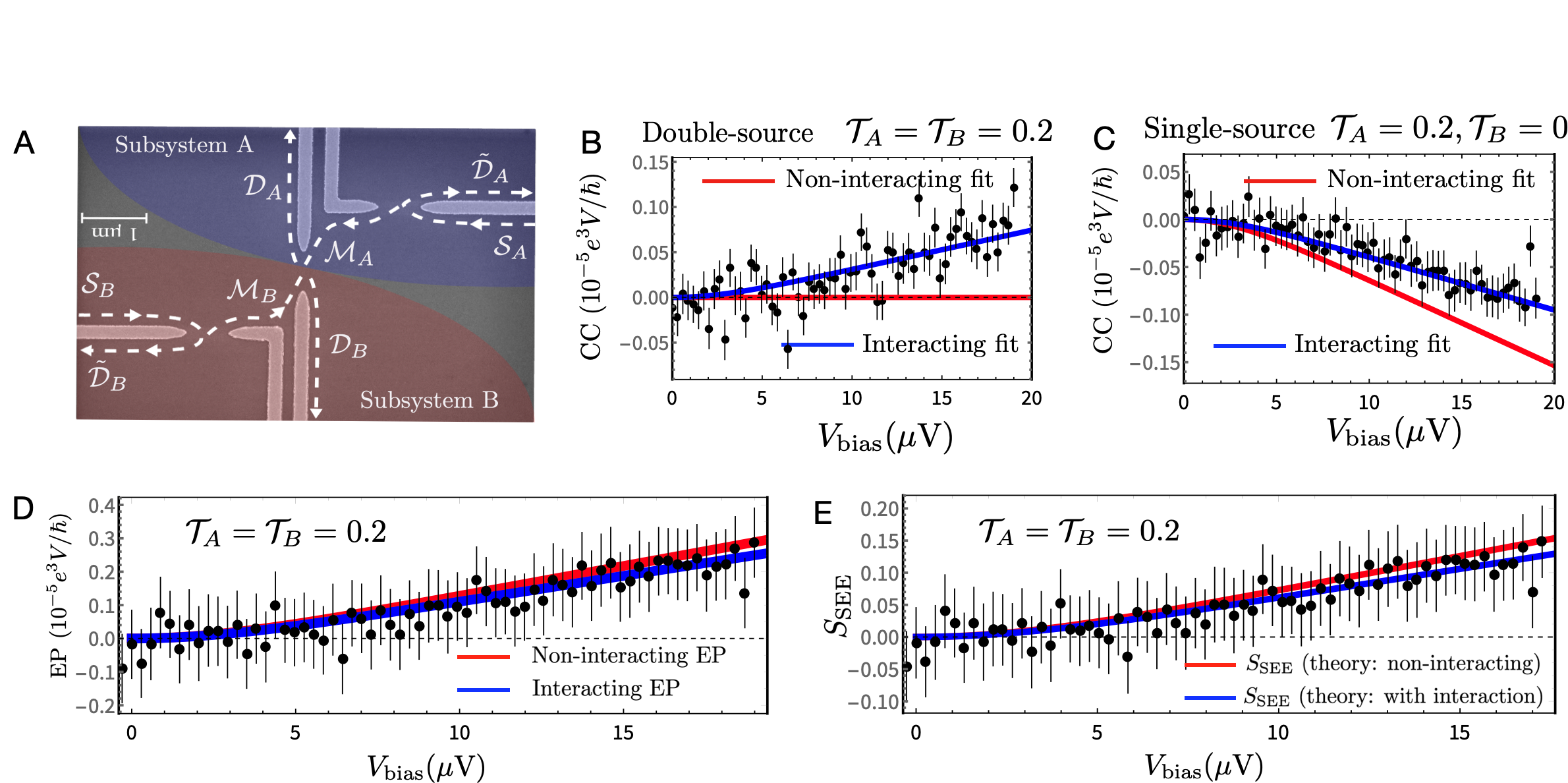Topological Quantum Computation Team of BAQIS has achieved advances in combining quantum statistics and quantum entanglement
2024/04/25
Recently, the Topological Quantum Computation Team at Beijing Academy of Quantum Information Sciences (BAQIS), in collaboration with Prof. Yuval Gefen’s Group of Weizmann Institute of Science, as well as Prof. Igor V. Gornyi’s Group of Karlsruhe Institute of Technology, theoretically proposes to quantify quantum entanglement and entanglement entropy that are induced by particle statistics. This proposal, remarkably, is further experimentally realized by collaborators from Prof. Moty Heiblum’s Group of Weizmann Institute of Science. The article that reports these achievements, entitled “Measuring statistics-induced entanglement entropy with a Hong-Ou-Mandel interferometer”, is recently published on Nature Communications, on April 23rd, 2024.
Quantum entanglement and quantum statistics are two key concepts in the field of quantum mechanics. Among them, quantum entanglement, especially its non-local properties, is crucial for quantum communication; while quantum statistics, especially non-abelian statistics, is the cornerstone of the field of topological quantum computation. However, relationship between these two concepts remains a scarcely-visited topic.
Researchers manage to fuse these two concepts that are fundamental in quantum technology, and propose the concept: quantum entanglement induced by quantum statistics. This concept is further proposed to be quantified by two experimental observables, named as "entanglement pointer" and "statistically induced quantum entanglement entropy". The relation between these two physical quantities and Bell's inequality is also discussed by the researchers. Furthermore, fermionic version of both physical quantities is experimentally measured in an integer quantum Hall system (as shown in Fig. A, on a two-dimensional electron gas in GaAs-AlGaAs heterostructure), particularly achieving the pioneering measurements of von Neumann entanglement entropy in transport systems, as demonstrated in Fig. E.
As shown in Figs. D and E, experimental observations of "entanglement pointer" and "statistics induced entanglement entropy", respectively, closely match theoretical expectations. Additionally, compared to typical cross-correlations (CC, of Figs. B and C), functions proposed by the researchers, with connection to quantum statistics, exhibit significant resistance to interactions. This study, remarkably, is potentially extendible to anyonic, especially non-abelian anyonic systems, thus offering new insights for topological quantum computation.
The first authors of this research article include Dr. Gu Zhang, an Assistant Researcher at the Quantum Institute, Dr. Changki Hong, and Mr. Tomer Alkalay. The latter two are a Postdoctoral Fellow, and a PhD student, respectively, from Weizmann Institute of Science. The corresponding authors include Prof. Moty Heiblum, from Weizmann Institute of Science, Professor Igor Gornyi from the Karlsruhe Institute of Technology, and Professor Yuval Gefen from Weizmann Institute of Science. The other coauthor, Dr. Vladimir Umansky, a Senior Research Fellow from Weizmann Institute of Science, designs and grows the heterostructures by molecular-beam epitaxy. This work is supported by German Research Foundation, German-Israeli Foundation, the Helmholtz International Fellow Award, the US-Israel Binational Science Foundation, the Minerva Foundation, and the European Union’s Horizon 2020 Research and Innovation Programme.
Link to the article:https://www.nature.com/articles/s41467-024-47335-z#article-info

A: The experimental setup: a GaAs-AlGaAs heterostructure in the quantum Hall regime. This article discusses quantum entanglement and entanglement entropy between two subsystems. B and C: Experimental measurement of cross correlation (CC), of double-source (B) and single-source (C) scenarios. The experimental data (black points) matches well with interacting theoretical results (blue line), and show significant difference from non-interacting ones (red line). D: Experimental (black points) and theoretical results (blue and red lines) of the entanglement pointer (EP). E: Experimental (black points) and theoretical results (blue and red lines) of statistics induced entanglement entropy (SEE).
 中文
中文 Email
Email QCloud
QCloud Log in
Log in
